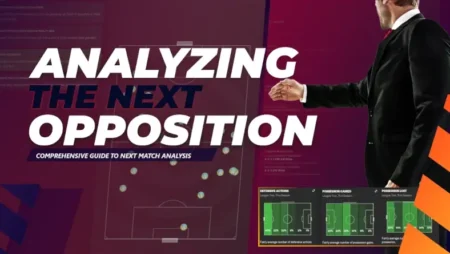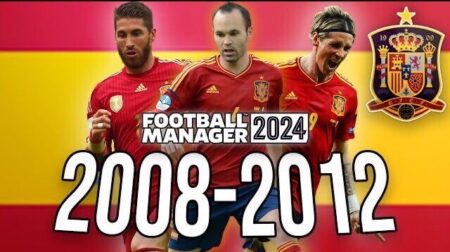Last time, tacticof World Cup 2022 Tactical preview gave you a closer insight to Martinez’s Belgium tactics and how you can replicate their tactics in FM22. This time it’s a tactical preview of Didier Deschamps France Tactics for Football Manager 2022, and how you can emulate the France tactics in FM22.
By continue reading you’ll get a better idea of the France’s 3-4-1-2 tactics and Deschamps’ preferred division of roles and responsibilities for the 2022 World Cup in Qatar. For further information about Deschamps’s manager profile, please check out Deschamps’s Manager profile on tacticof.com.
Quick Background to Deschamps’ France
France enters the World Cup 2022 as defending championships and Dider Deschamps men could potentially become world championships two times in a row! Why?!
At the moment, Les Bleus are 3rd in the FIFA rankings and went unbeaten through the World Cup qualifications. In fact, they haven’t lost a game since they 0-2 defeat against Finland November 20th, 2020, if we look away from their penalty defeat against Switzerland. Now, they are the clear favorites to progress from Group D, where they will face Denmark and Tunisia and the winner of IC playoff 1, namely someone from the trio of: Australia, United Arab Emirates or Peru.
Over the next few months tacticof will give you a World Cup Qatar 2022 tactical preview by looking at the qualified teams’ tactics and manager’s profile, and how you could replicate their tactics in Football Manager! Find tactical previews of all national teams in Qatar World Cup 2022 right here.
Deschamps France Tactics for World Cup 2022 Explained via Football Manager 2022
Formation & Shape
After EURO 2020 Didier Deschamps switched his team to playing three at the back using a mostly starting 1-3-4-3 formation with two variants: the more offensive 1-3-4-1-2 and the more cautious 1-3-4-2-1.
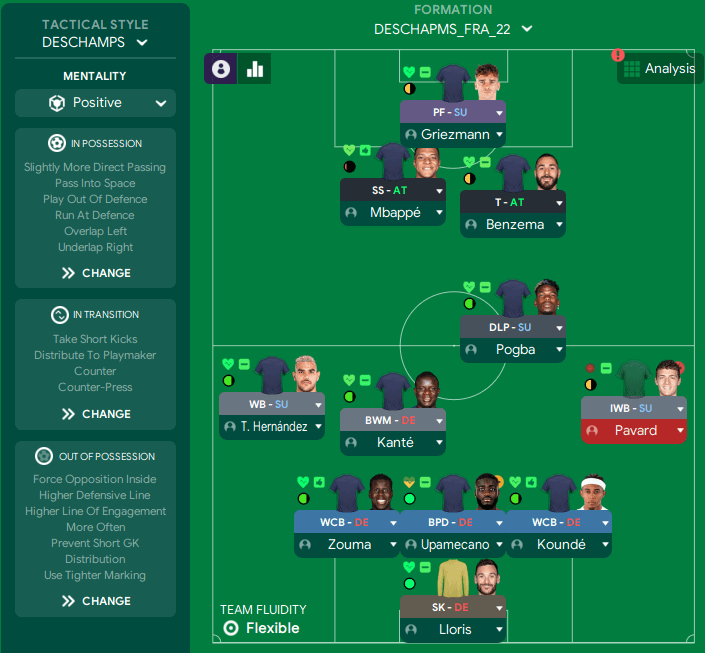
In defence they use high but narrow pressing aiming to get the ball back as quickly as possible and move to the counter-attack. They start the pressing already from the front offensive line. Griezmann, who plays mostly as a pressing forward, pressures the opponent’s defensive midfielder.
However France do not use the same strategy every time. Sometimes they put pressure on the opponent in the middle zone of the pitch waiting for the so-called “triggers” (a bad pass, a poor first touch on the ball or even a turnover or backward pass by the rival).
In the defensive third France tries to mark tight one-on-one while the wingers move forward to put pressure on the rivals’ defenders. In this way they deprive the opponent of free players. Pressing through the offensive line also forces the opponent’s central defenders to position themselves wider which makes it more difficult to play patient ball from deep.
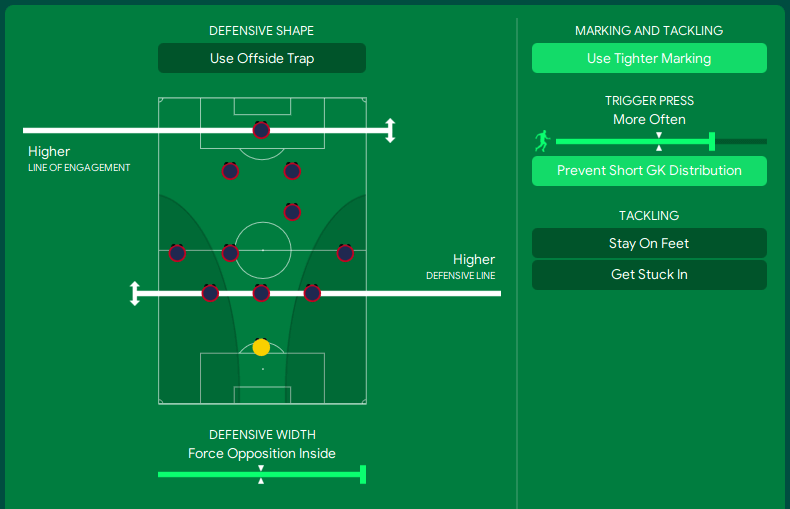
1-3-4-1-2 proves to be most effective in recovering the ball in the middle third. The other two forwards, Benzema and Mbappe, occupy positions on the outside of the opponent’s central defenders’ shoulders to discourage them from putting pressure on the deeper positioned Griezmann – thus preserving the space he seeks between the lines.
Their positioning also pulls the rival defenders inwards which increases the amount of space the winger can enter. It’s also helped by a compact midfield ready to surround the opponent on the ball. The player closest to the ball applies pressure by attacking the opponent if possible while the other midfielders are ready to receive the ball and execute a quick counter.
After gathering the ball France tries to launch a quick counterattack but its intensity depends on the situation (where the ball is recovered, the result of the match…). However their attacking pattern remains the same regardless of the situation. They create danger mainly by playing through the lines, bringing the ball as quickly as possible into the offensive third.
They sometimes leave a large space between the midfield and the defence which Griezmann often enters by receiving the pass and playing it to the wingers. With such direct progressive passes they not only gain area but very often immediately create a threat within the rivals’ penalty box.
Pavard maintains a very wide position on the right and looks for space to run on the wing, while on the left Theo Hernandez moves more towards the center as Mbappe prefers a wider game than Benzema who uses more varied moving.
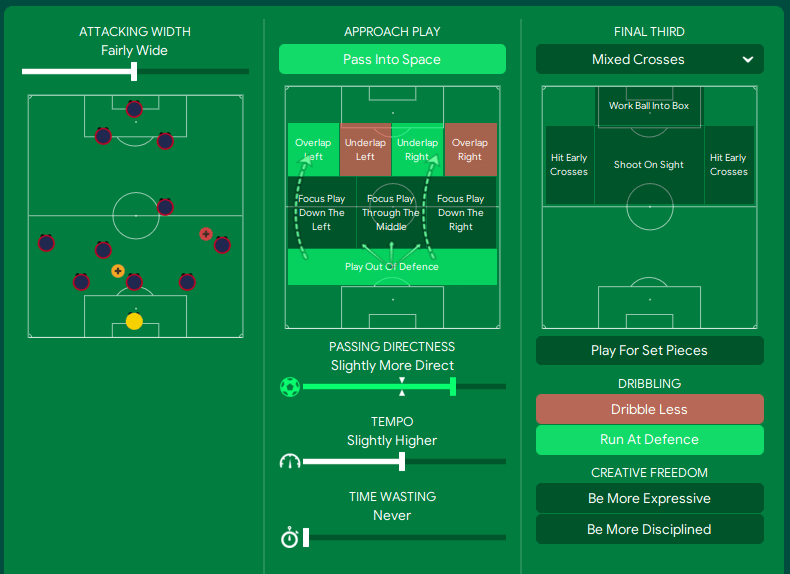
The other repeated pattern of play for Deschamps’ team is a progressive play through the middle. When their wingers are well covered by their rivals they gain free space in center. When the ball is passed to Griezmann, Pogba leaves his starting position and moves forward to find enough free space to receive the pass. When the opponent’s midfield cannot react quickly enough, France are able to exploit this fact and move forward quickly in a narrower formation with the wingers coming down the middle.
Playing against a very defensively positioned opponent who restricts access to the two French strikers, Mbappe and Benzema move deeper back to receive passes and use wide cross to the other wing, even when they are in their own half (sic!). After such a cross they generally return to their starting offensive positions where more free space is automatically created.





